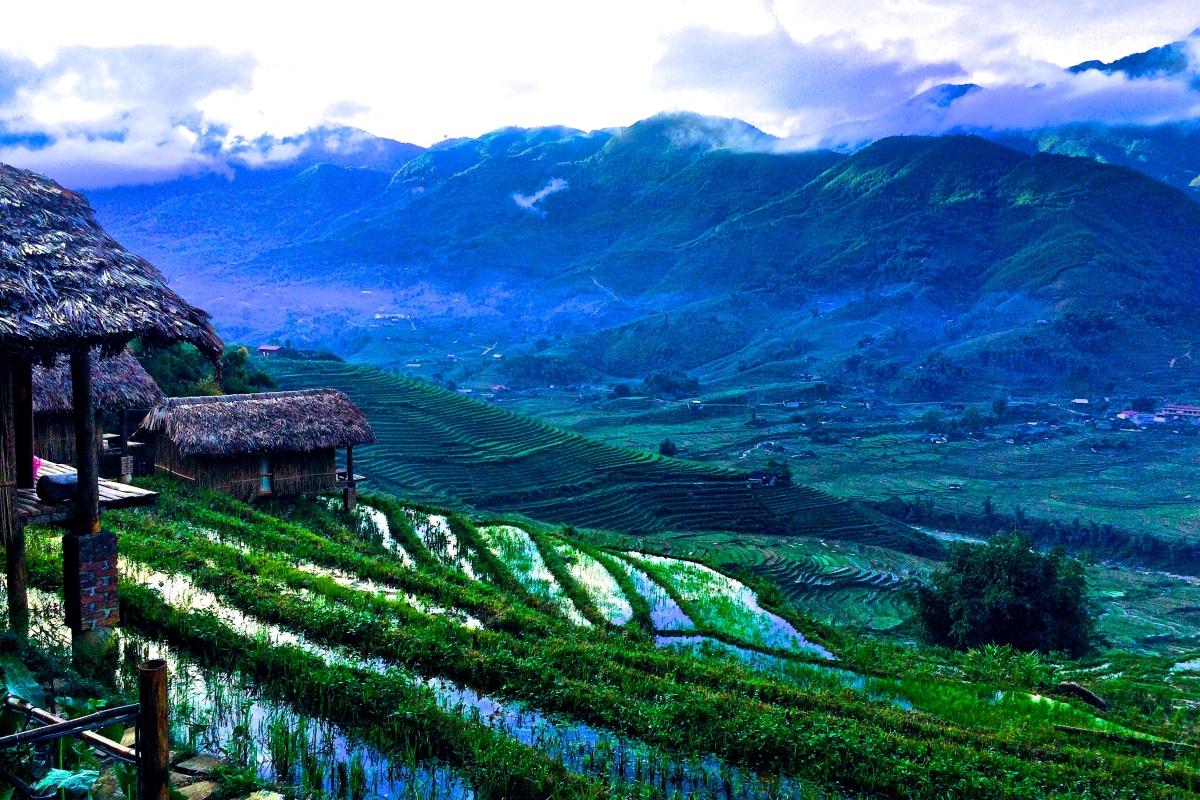Tucked away in Northwest Vietnam, lies one of the most spectacular and lesser known regions of the world. Sapa is a township in Vietnam that is surrounded by 17 villages, some much smaller (300-3000 people) than others. Though occupied for thousands of years before the French, who first arrived in the 1800s, it was during colonial French rule that Sapa became famous as a stunning “hill station.” The true beauty of this area lies in the picturesque villages just outside the town of Sapa. I stayed in Lao Chai village. In the villages surrounding Sapa, travelers will find farms for water buffalos and rice paddy fields. When visiting Sapa, you will have spectacular views of terraced rice paddies built along the magnificent hills and mountains.
Several hill tribes live in the region of Sapa. These include not just the Kinh people, or ethnic Vietnamese, but also eight different ethnic tribes. Experiencing the culture here is just as rewarding as taking in the magnificent scenery.
The Hoàng Liên Son mountain range is found in this area and is actually the eastern end of the famous Himalaya mountain range. Fansipan, also called “the Roof of Indochina” is a mountain in Vietnam that is just 9 km from Sapa. It is 10,312 feet high (3,143 metres) and is the highest in Indochina (made up of Vietnam, Laos, and Cambodia). Trekking to the top can be arranged from local tour companies and takes 2 to 3 days. This region of Vietnam is very close to the border of China, with the train station at Lao Cai being just a 40 minute walk to the border crossing to Hekou in China.
What To Wear in Sapa, Vietnam:
What to Bring to Sapa, Vietnam:
How to get to Sapa, Vietnam:
What not to miss in Sapa, Vietnam:
Trekking around Sapa is highly recommended – you can get a guide when you get there for $40 for the entire day. The food here is also very famous. Locals steam the rice inside a bamboo so you crack the bamboo open to eat the rice. It was amazing!






You must be logged in to post a comment.